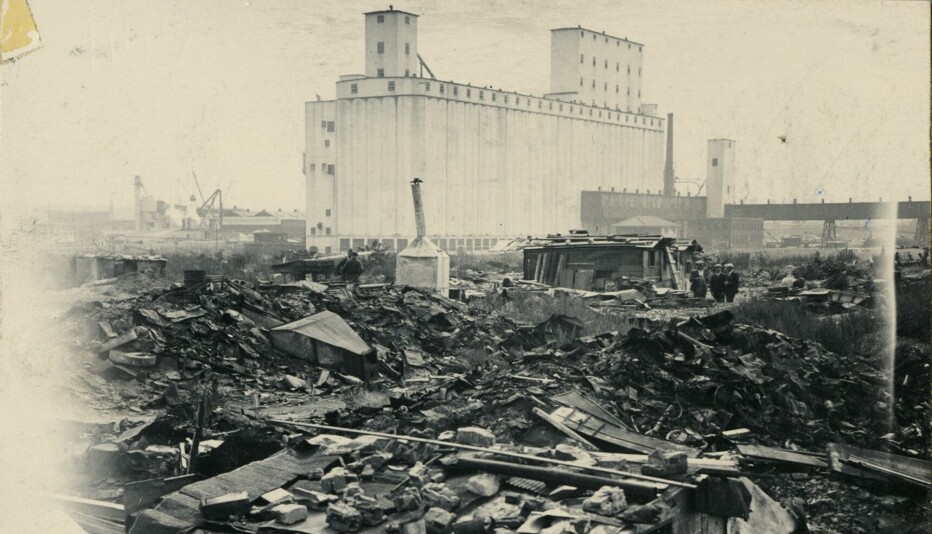The serpent from the Oseberg Viking ship has been hidden in storage for nearly 100 years
Today, a replica of the serpent adorns the Oseberg Ship.
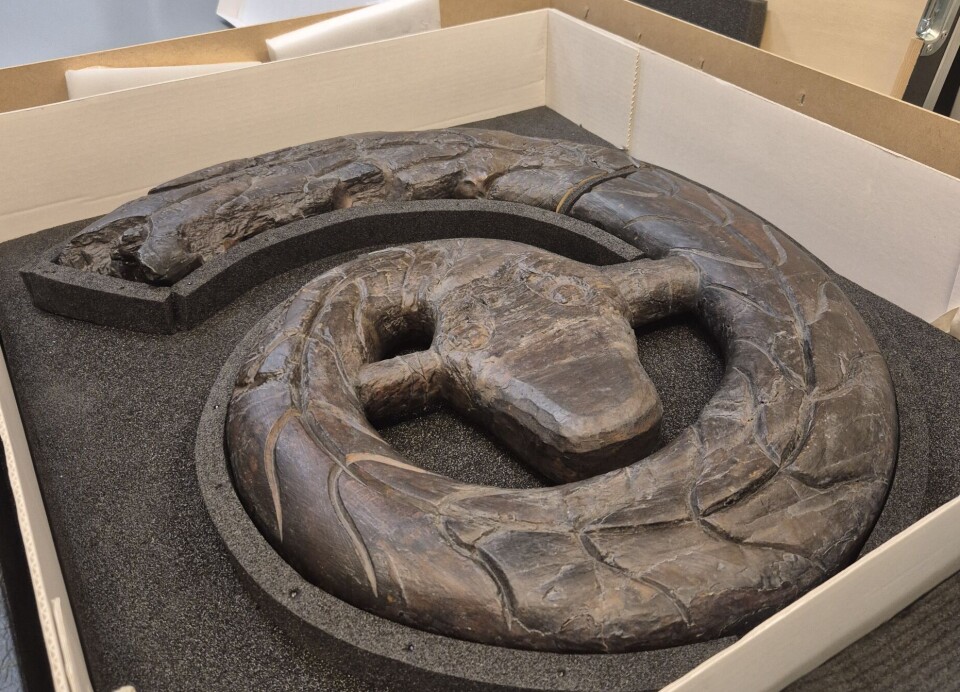
The serpent head coils in a spiral. This was the head that adorned the prow of the Oseberg Ship.
Currently, the Oseberg Ship cannot be viewed due to work on the new Viking Age Museum, but when it was on display, you could see a recreation of this serpent head on the ship's prow.
The original has been packed away in storage at the Museum of Cultural History for a long time.
But soon it will be displayed in a new exhibition at the museum.
Partially reconstructed
The serpent head is partially reconstructed, as you can see from the X-ray image below. Some new wood, filler material, and metal have been added at some point to piece the serpent together.
It was found in pieces during the excavation in 1904, Vegard Aleksander Vike tells sciencenorway.no. Vike is a senior engineer and conservator at the Museum of Cultural History.
The head that will soon be on display is as it may have looked when the grave was sealed in the year 834.
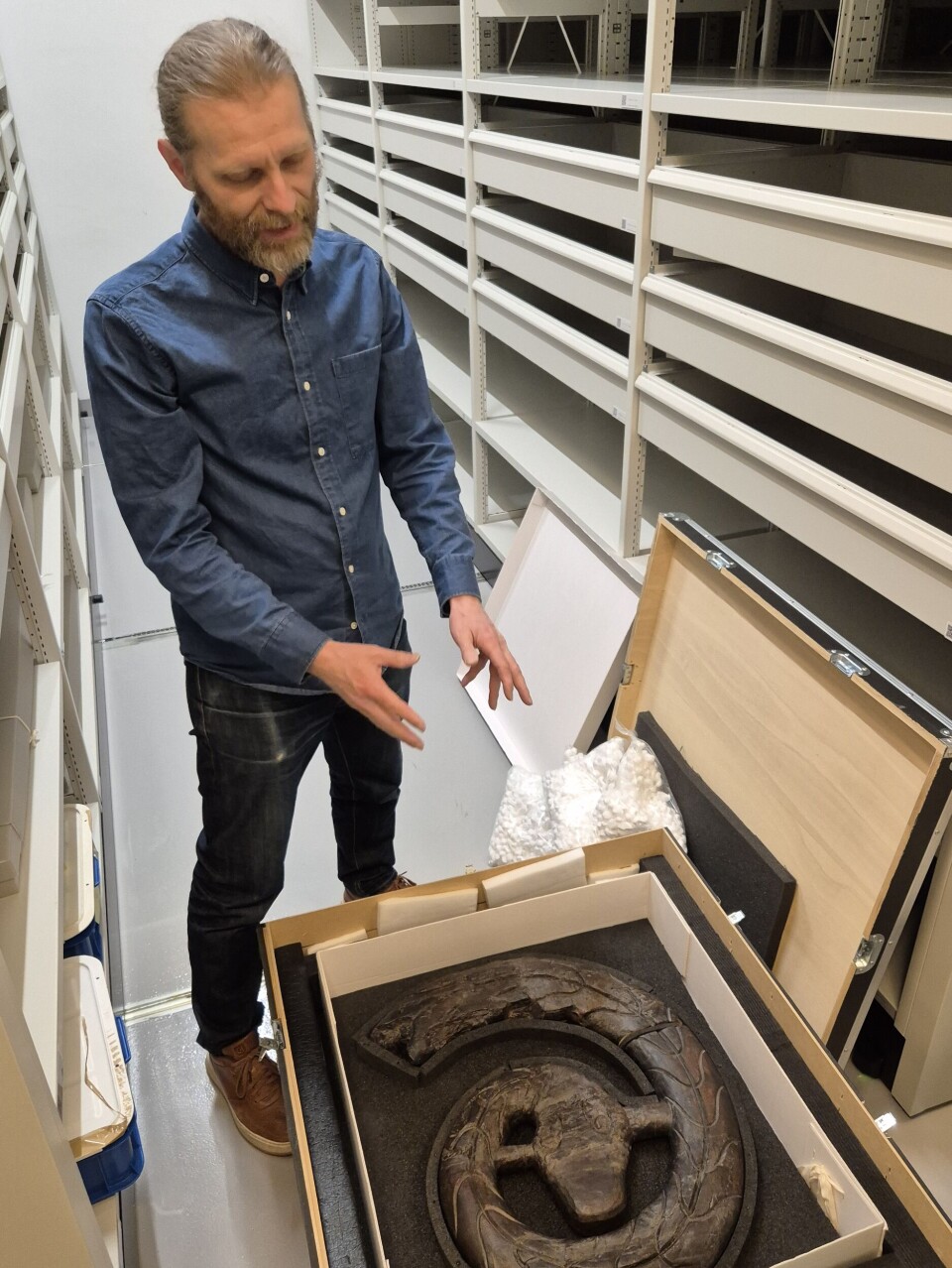
He is not sure exactly when the reconstruction was made, but it may have been in connection with some of the Oseberg Ship finds being displayed in a separate wing of the Viking Ship Museum, which opened in 1957.
But it was not displayed back then. Vike is unsure why it was not shown.
He says we are lucky to even have what remains of the original.
It may have survived because of a grave robbery.
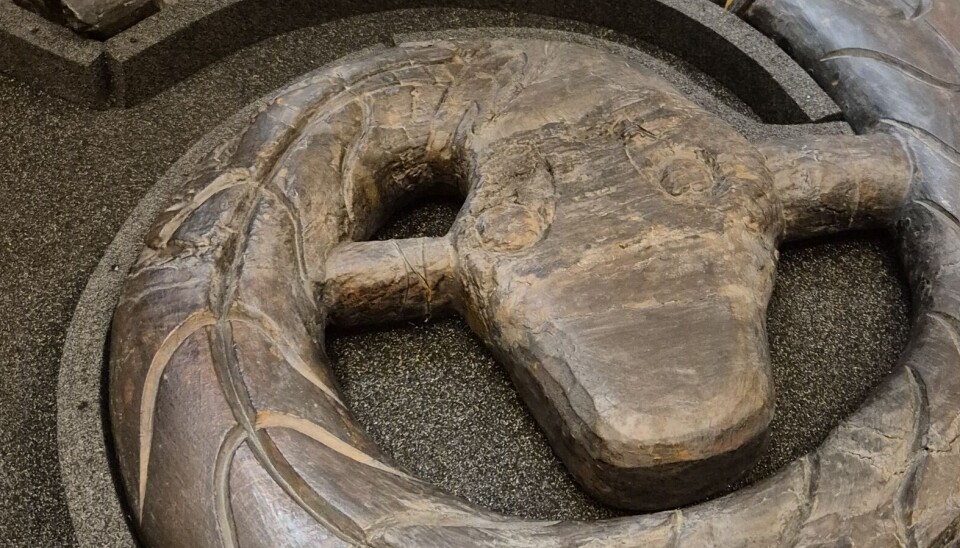
Rotted away
The Oseberg find is quite special, partly because so much from the grave is extremely well preserved.
Most viewed
There are detailed, woven textiles showing processions and costumes. Many kilos of down feathers were found in the burial chamber, and a thick rope that moored the ship in the grave was still preserved.
In addition, sleds, wagons, a special bucket, and other decorative items have been found.
This still exists because of the preservation conditions in the grave. Vike explains that objects that were buried deeper in the ground ended up in water and were therefore well preserved.
"The top of the stern has completely rotted away, because it was closer to the air," he says.
Therefore, researchers do not know what that end of the ship looked like.
This does not apply to the serpent head at the front of the ship. But it was damaged during the grave robbery that occurred over 100 years after the Oseberg burial mound was sealed, according to the Great Norwegian Encyclopedia.
This grave robbery disturbed much of the burial chamber.
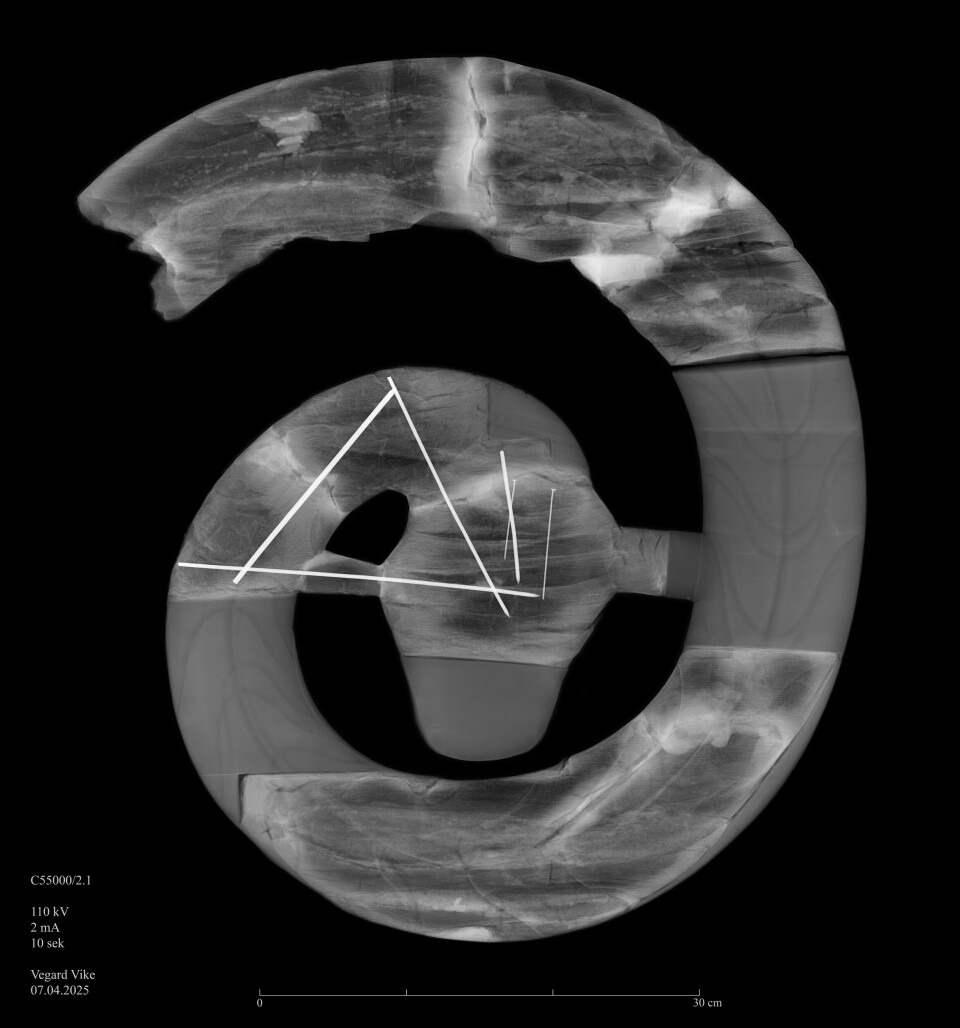
On purpose?
Grave robbers dug a shaft into the burial mound that went straight through the serpent head.
This find is described in detail in the book Osebergfundet Volume 1 from 1917.
A semi-circular fragment of soft wood with carvings was found in front of the ship's bow. This was part of the 'magnificent serpent,' as the authors call it.
'The other fragments belonging to the prow's 'dragon ornamentat' were found in the break-in hole above the actual burial chamber itself,' the book states.
"Maybe the grave robbers deliberately chopped it off to strip the ship of its power. But we can't be sure," Vike tells sciencenorway.no.
He points to descriptions from the sagas about how Vikings were supposed to remove the prow head when they returned home and sailed towards land.
"They probably believed this fierce creature protected them," he says.
Whether it was an accident or not, this incident at least made it possible for pieces of the 'magnificent serpent' to survive until the excavation in the early 1900s.
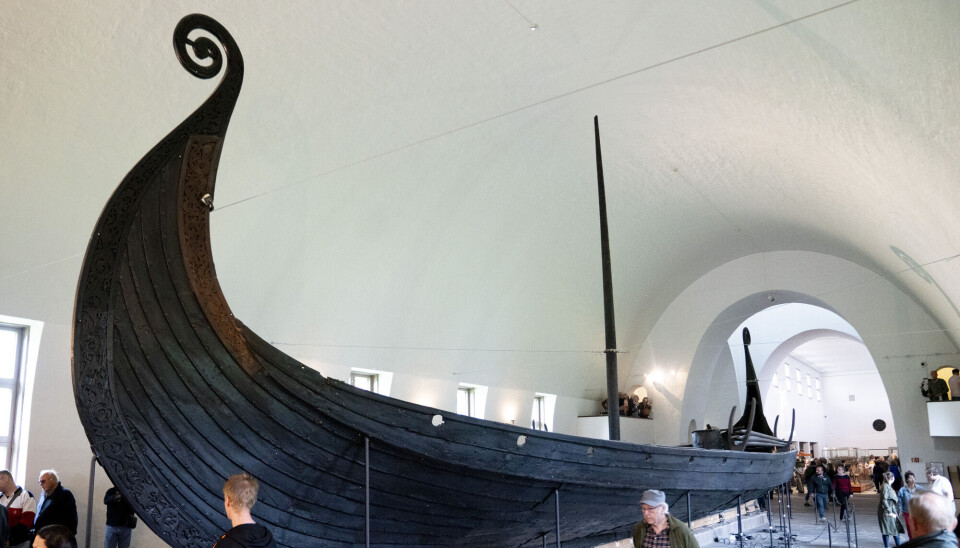
Reconstruction
But as you can see in the X-ray image, this serpent head is also a mix of old fragments, modern wood, and pins inserted after the excavation to hold it together.
The original wood fragments can be seen in the illustration below. Like many other wooden objects from the Oseberg find, these pieces were preserved using alum conservation.
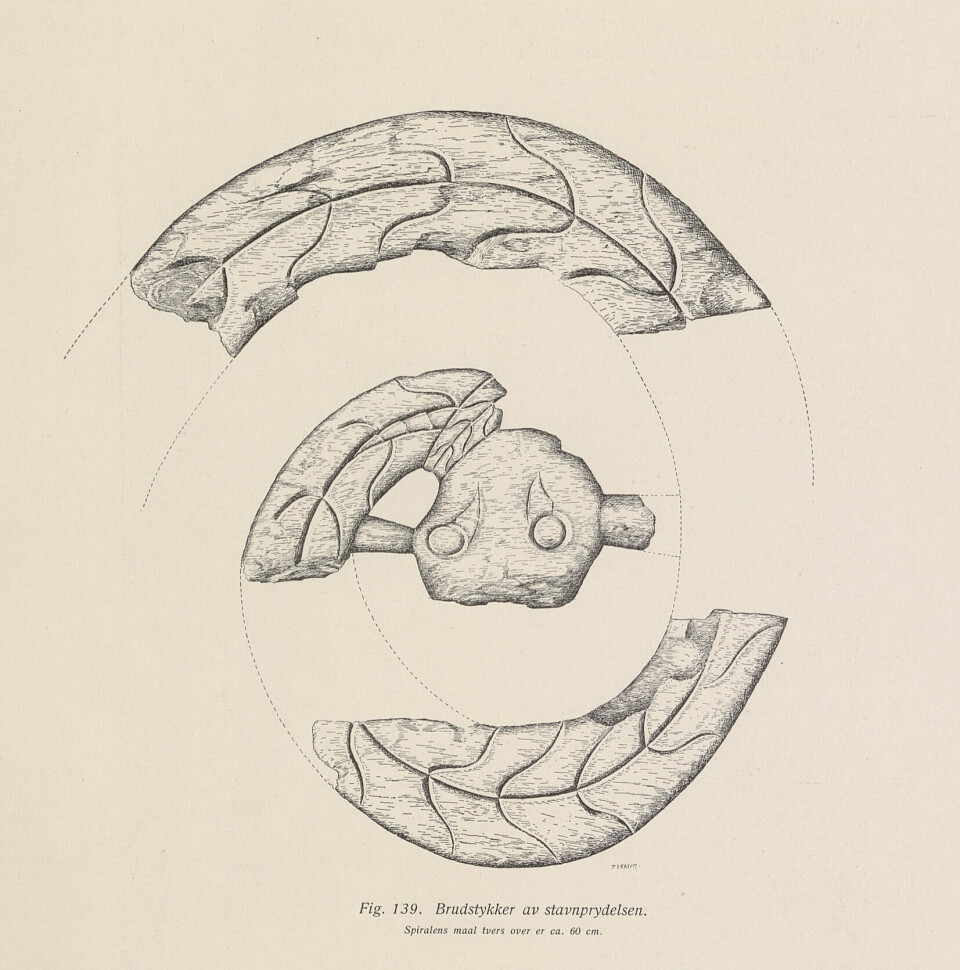
This preservation process involved soaking the wood in a warm salt solution. The salt dried into the wood, helping the pieces keep their shape – but also causing them to lose their wooden character, according to the Museum of Cultural History.
This was a method used over 100 years ago. Today, much better and gentler methods are available.
The wood became brittle and fragile like glass, according to the Museum of Cultural History.
Some of the fragments were reassembled. According to Vike, it’s possible the pieces fell apart during the prolonged boiling involved in the alum treatment.
"It was definitely tough on the wood, and they may have inserted the pins while it was still soft," he says.
Exhibited with a copy
But it's unclear when the reconstruction took place. Sciencenorway.no has asked Arne Emil Christensen, who was in charge of the Viking Ship Museum from 1990 to 2006.
He is professor emeritus in Nordic archaeology at the University of Oslo. He also does not know when the original fragments were reassembled.
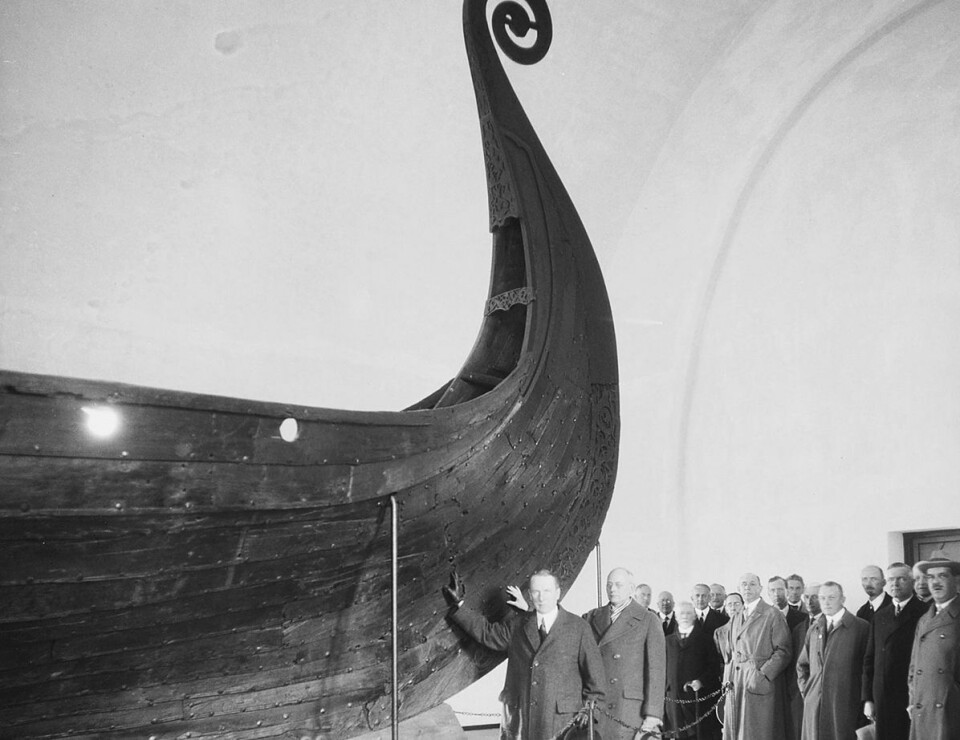
The original fragments were likely stored in the archives of the Museum of Cultural History.
The Oseberg Ship was exhibited for the first time at the Viking Ship House on Bygdøy when it opened in 1926. In 1927, the copy of the serpent head was in place, according to pictures at the Viking Age Museum.
"They probably thought long and hard before they agreed on the reconstruction," says Christensen.
He adds that the decision not to exhibit the original ornament likely has to do with the fact that some pieces are missing.
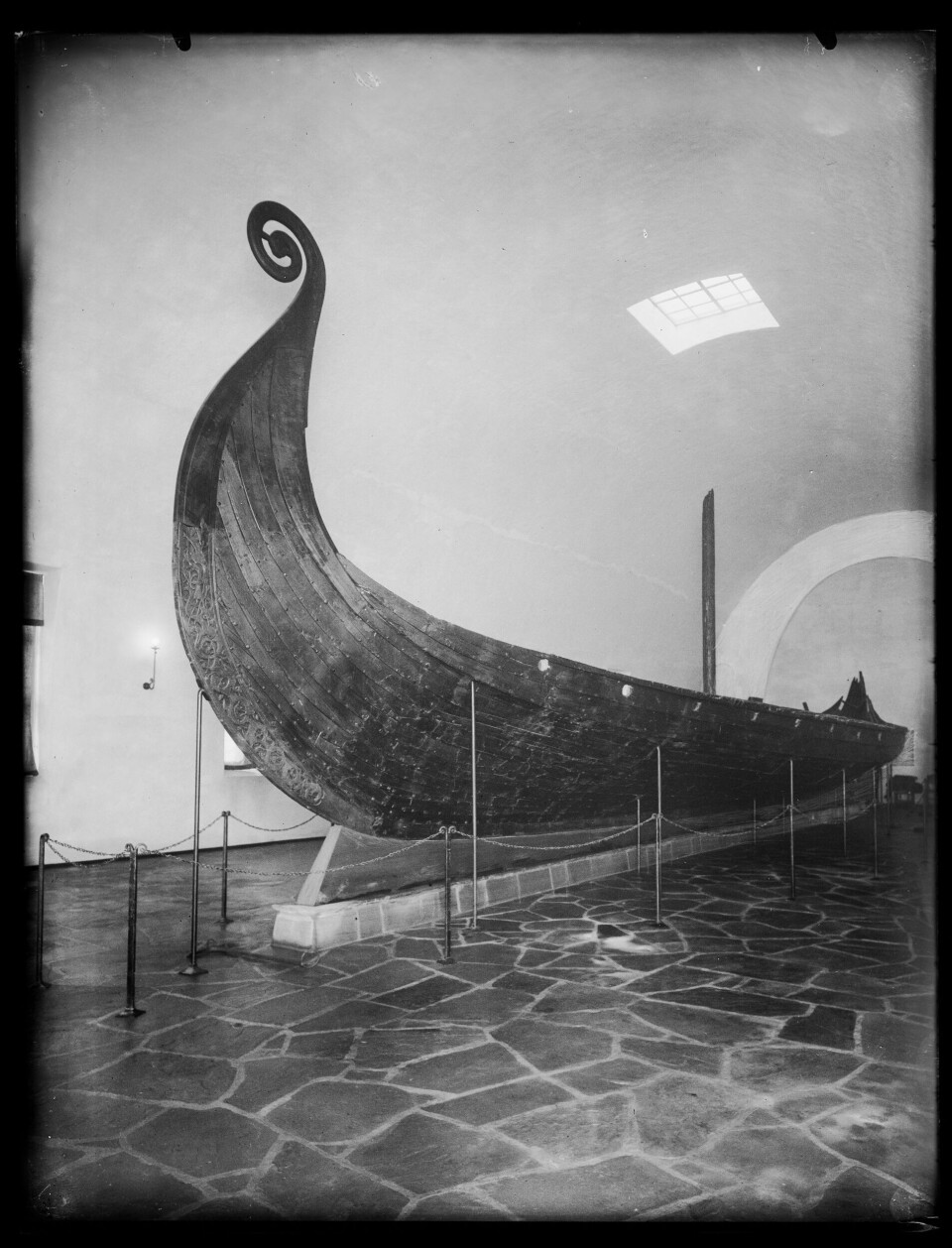
At that time, they also added the serpent's tail to the stern.
"That part is pure imagination, modelled after the front of the ship," he says.
———
Translated by Alette Bjordal Gjellesvik
Read the Norwegian version of this article on forskning.no
Related content:
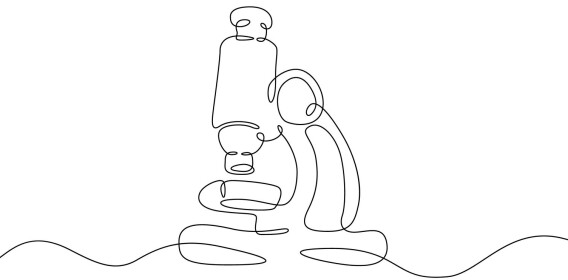
Subscribe to our newsletter
The latest news from Science Norway, sent twice a week and completely free.





































